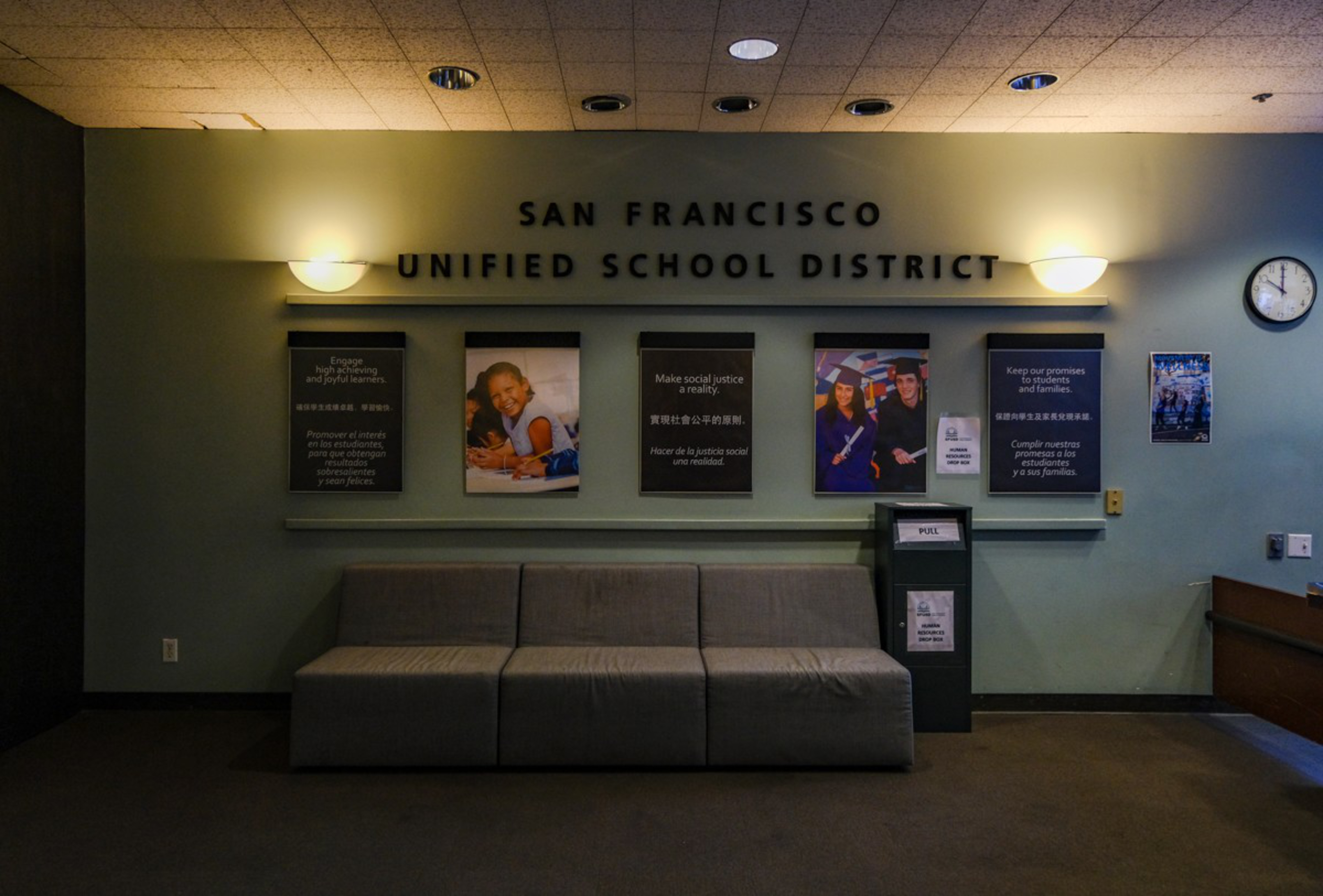San Francisco Unified School District is considering cutting 121 jobs from its central office as part of a broader layoff plan, a move that could shift more administrative burdens onto educators as the district grapples with a $125 million deficit.
Of the proposed administrative cuts, the largest chunk—totaling nearly 50 positions—would come from the student and family support division, which runs programs such as immigration assistance, translation services and distance learning help. Next on the chopping block are 33 jobs from curriculum and instruction staff, followed by 21 jobs from policy and operations.
Anne Marie Gordon, SFUSD’s executive director of budget services, told the SF Standard that the district is targeting vacant positions for cuts to minimize job loss. Despite an ongoing staffing shortage, about 80% of the district’s total budget is consumed by staffing costs. Owing to high per-pupil spending and dwindling reserves, San Francisco public schools rank among the worst in the state in financial stability according to a recent analysis by the district.
The biggest impact of the job cuts on day-to-day school operations, Gordon said, will be asking school leaders and staff to take on more work that would normally be shouldered by administrators.
“It’s going to be more up to schools to have those resources,” Gordon said. “That’s where there’s going to be a lot of strain on the system.”
The staff cuts are central to the SFUSD’s response to a budget crisis exacerbated by the pandemic, which led to a drop in enrollment that could threaten its state funding over the next few years. The size of its deficit triggered a fiscal audit by the California Department of Education, which requires the district to commit to drastic cuts by Dec. 15 to avoid a possible state takeover.
As part of the state-mandated budget plan, the district must close its $125 million budget shortfall through a combination of spending cuts. Under the proposed plan, the cuts could amount to 360 full-time jobs districtwide and $90 million in total cost reductions, including $40 million from the district’s administrative offices and $50 million from its 130 sites.
Site-specific job cuts could include reductions in school support staff like counselors, nurses and literary coaches. Key departments are also expected to see major cutbacks, including $1.4 million from early education, $6 million from student and family support programs and more than half a million from special education.
There is some help on the way for the district, however.
The district is set to receive $150 million in tax revenue that has been held up in ongoing litigation of Proposition G, (opens in new tab) a 2018 parcel tax to raise revenue for the district, after the California Supreme Court upheld the legality of the tax on Wednesday. While the money was tied up in court, the district has been paying staff salary increases—a mandatory set-aside enshrined in the law—using its rainy day fund and a $26 million loan from the city. Wednesday’s decision effectively unlocks three years’ worth of revenue owed to the district.
On Friday, Mayor London Breed and District 9 Supervisor Hillary Ronen said they would forgive the district’s $26 million loan as soon as it submits its budget balancing plan to the state. Myong Leigh, the district’s deputy superintendent of policy and operations, said on Wednesday that district staff will bring recommendations for how to use the newly awarded $150 million to a Dec. 1 budget meeting.
But these stopgap measures won’t solve the district’s long-term budget woes, Gordon told the SF Standard.
“Once we use that, there isn’t more coming in behind it,” she said.
Each of the four full-time staff jobs slated for cuts in the district’s special education department are currently vacant, said head of special education Jean Robertson at Wednesday’s budget meeting. To do more with fewer resources, Robertson said the department plans to staff teams that support entire programs—like its program for students with mild to moderate autism—rather than supporting individual cohorts of students.
“I don’t want to say it’s an easy hit for us, because we’re already feeling the strain,” Robertson said. “We’re going to be very mindful and thoughtful about not hitting our sites.”
The district’s technology department is also slated to lose 11 still-vacant positions. During the COVID-19 pandemic, students’ technology needs vastly increased, so the district’s technology department ramped up, said Melissa Dodd, the district’s head of technology. With cuts to administrative staff, Dodd said the department will be forced to scale back on teacher coaching, technology help and launching new initiatives, even as technology needs in schools only increase year by year.
“While we’re back in person, those needs don’t go away,” Dodd said.
